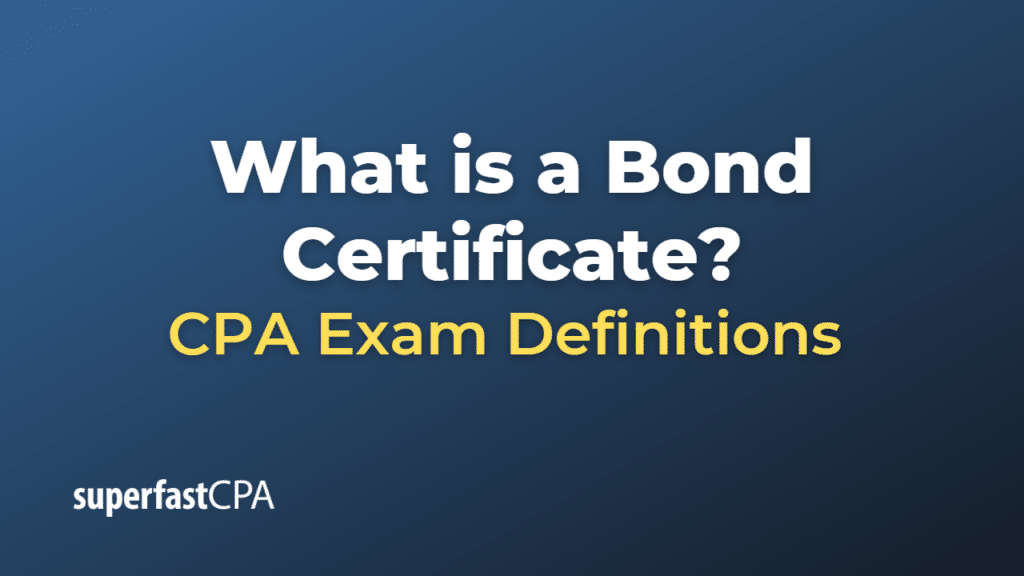Bond Certificate
A bond certificate is a physical document that represents ownership of a bond issued by a corporation, government, or other organization. The certificate serves as proof that the bondholder has lent money to the issuer in exchange for periodic interest payments and the return of the principal amount at the end of the bond’s term, also known as the maturity date.
Bond certificates typically include the following information:
- Issuer’s name: The name of the entity issuing the bond (e.g., a corporation or government).
- Bondholder’s name: The name of the person or organization that holds the bond.
- Face value (par value): The principal amount of the bond, which is the amount the issuer will repay to the bondholder at maturity.
- Coupon rate: The annual interest rate that the issuer will pay on the bond’s face value. Interest payments are typically made semiannually or annually.
- Maturity date: The date on which the bond’s principal amount will be repaid to the bondholder and the bond will expire.
- Unique identification number (CUSIP or ISIN): A unique identifier that helps distinguish the bond from other securities.
- Issue date: The date on which the bond was issued and began accruing interest.
- Terms and conditions: Any additional provisions, covenants, or call features specific to the bond.
In recent years, the use of physical bond certificates has become increasingly rare, as electronic book-entry systems have largely replaced them. In a book-entry system, bond ownership is recorded electronically, and transactions are settled through digital transfers, making the process more efficient, secure, and cost-effective.
However, bond certificates still hold historical and collectible value, and some older bonds may still exist in physical form.
Example of a Bond Certificate
Let’s consider a hypothetical example of a bond certificate for a corporate bond issued by a company called “Global Transport Inc.
- Issuer’s name: Global Transport Inc.
- Bondholder’s name: Jane Smith
- Face value (par value): $5,000
- Coupon rate: 4.5%
- Maturity date: July 1, 2030
- Unique identification number (CUSIP): 123456789
- Issue date: July 1, 2020
- Terms and conditions: Callable after 5 years at a call price of 102% of the face value
In this example, Jane Smith holds a bond certificate for a $5,000 corporate bond issued by Global Transport Inc. The bond has a 4.5% annual coupon rate, meaning Jane will receive interest payments of $225 per year (4.5% of $5,000). The bond’s maturity date is July 1, 2030, at which point Global Transport Inc. will repay the principal amount of $5,000 to Jane.
The bond also has a call provision, which allows the issuer to redeem the bond after five years (July 1, 2025) at a call price of 102% of the face value ($5,100).
While this example illustrates the key details that would be included on a physical bond certificate, it’s important to note that most modern bonds are registered and traded electronically using book-entry systems, rather than through physical certificates.












